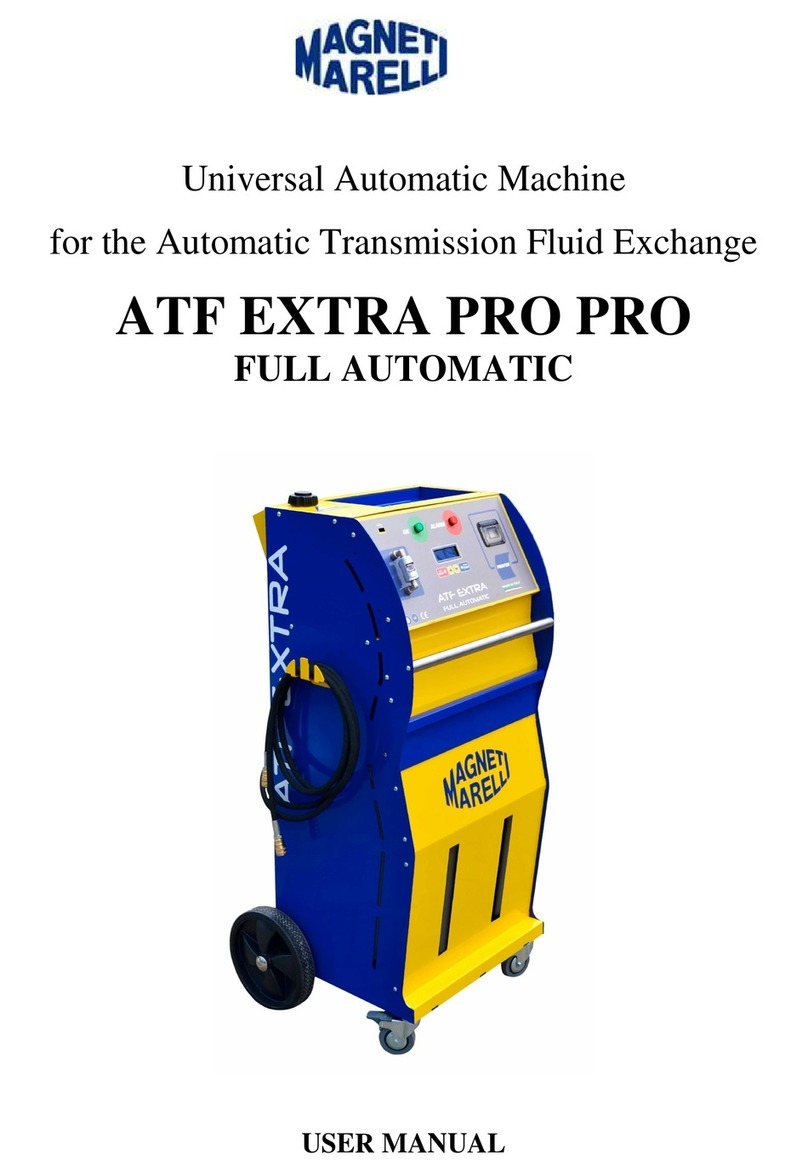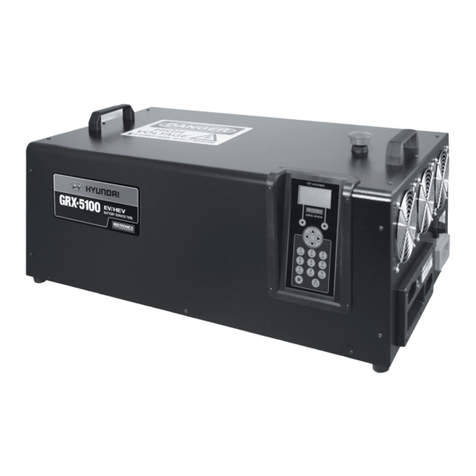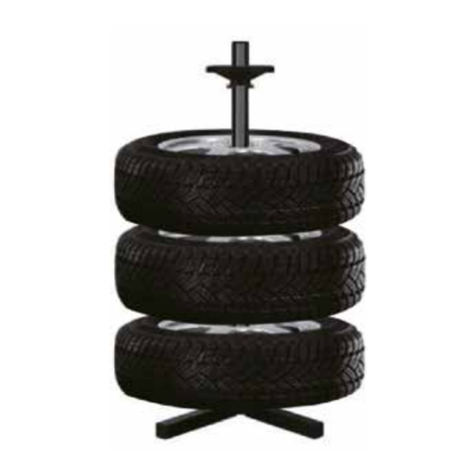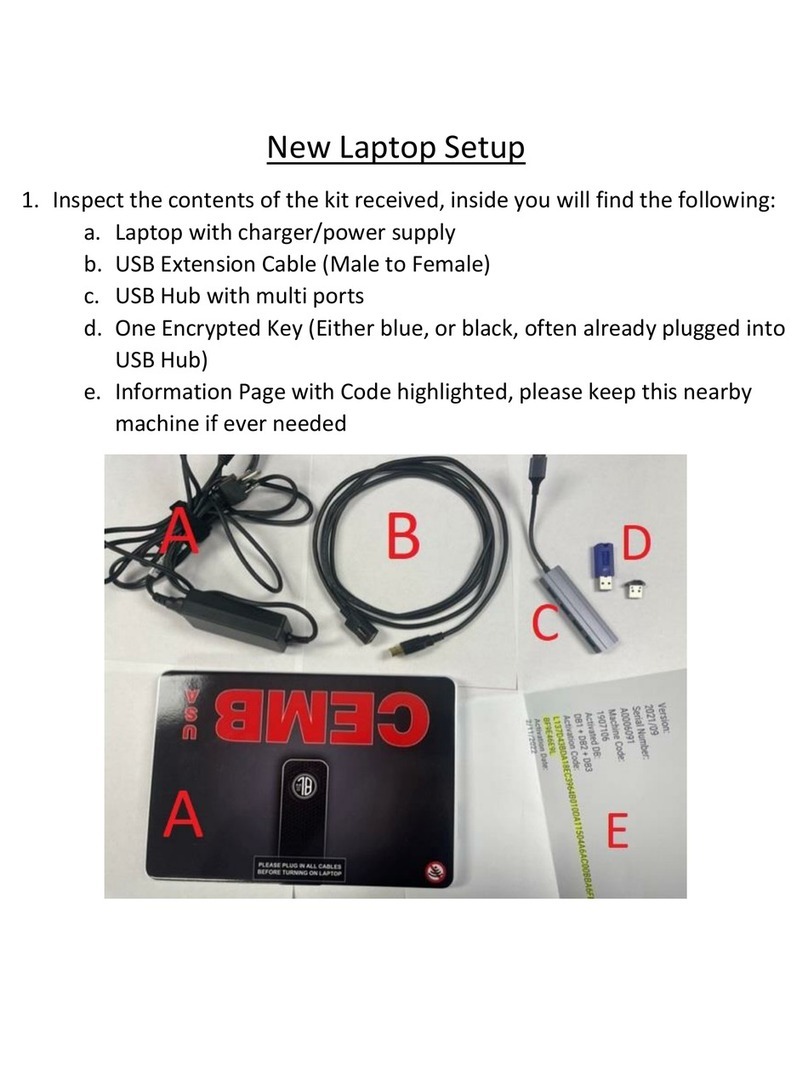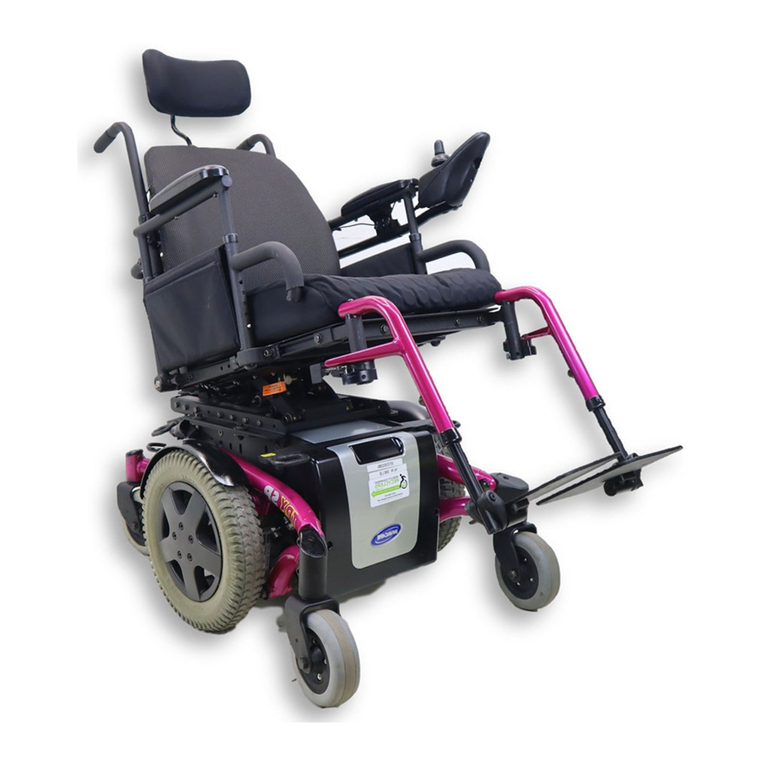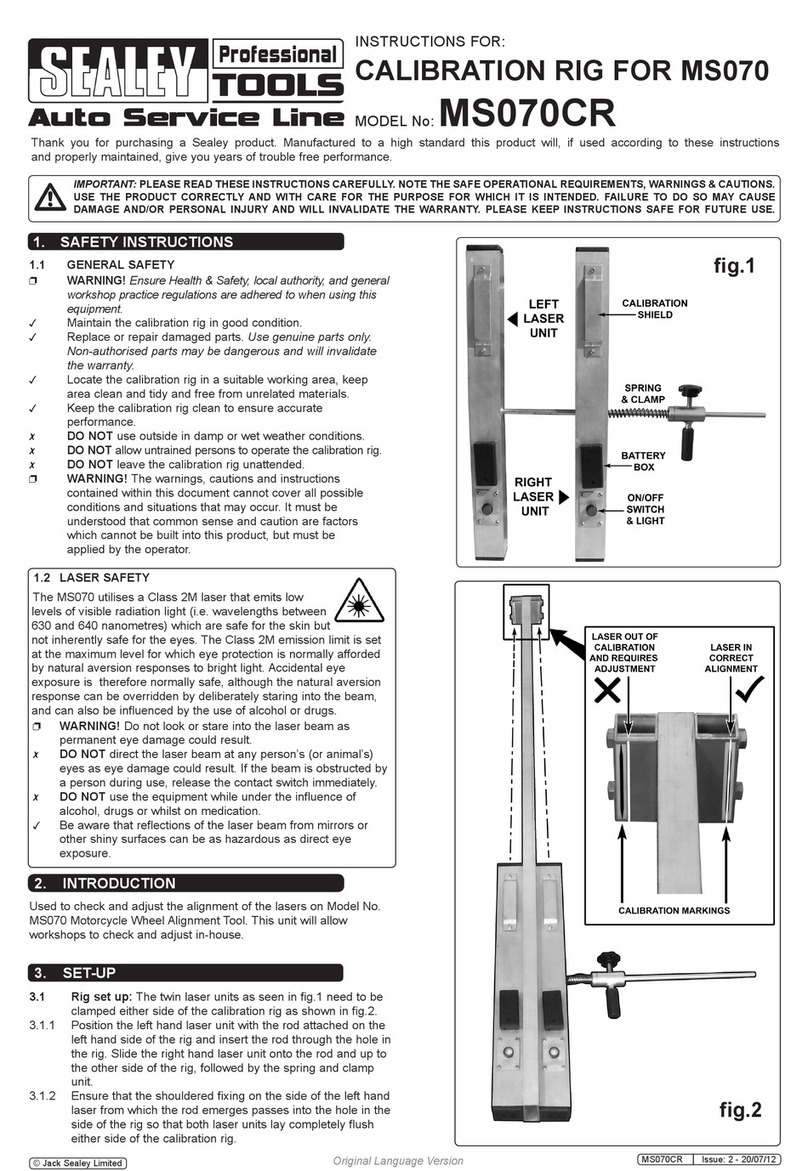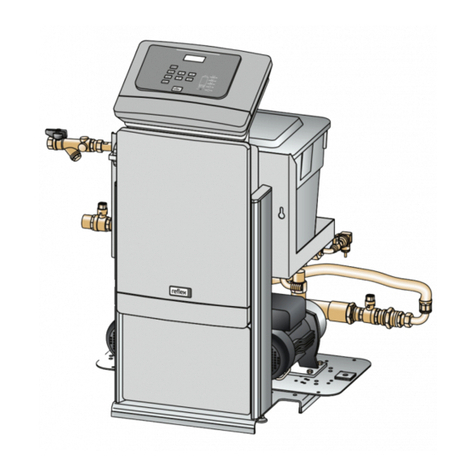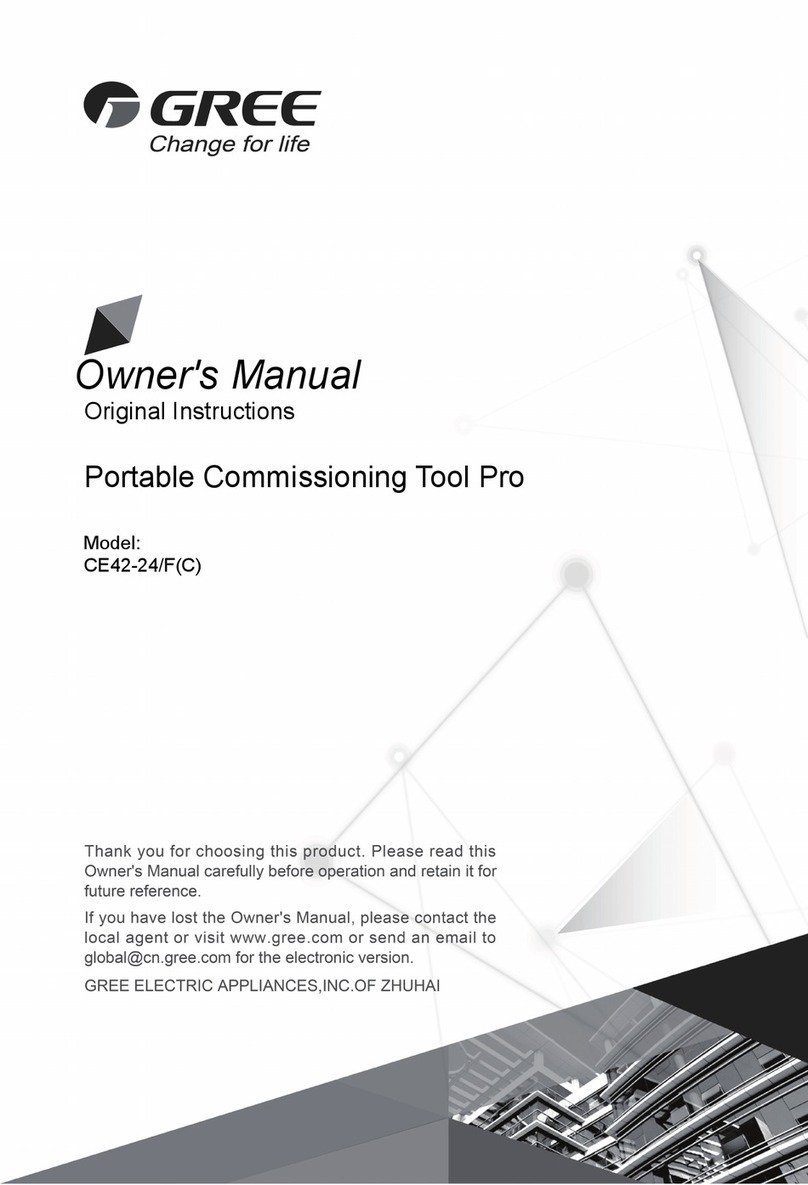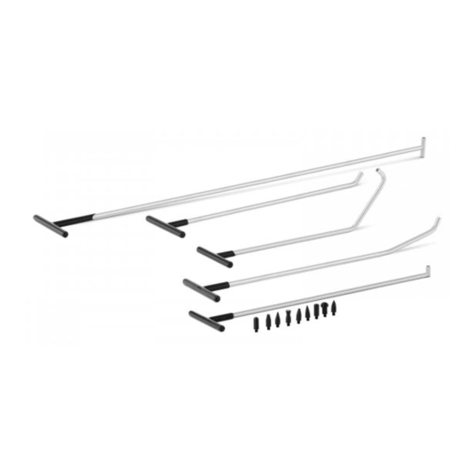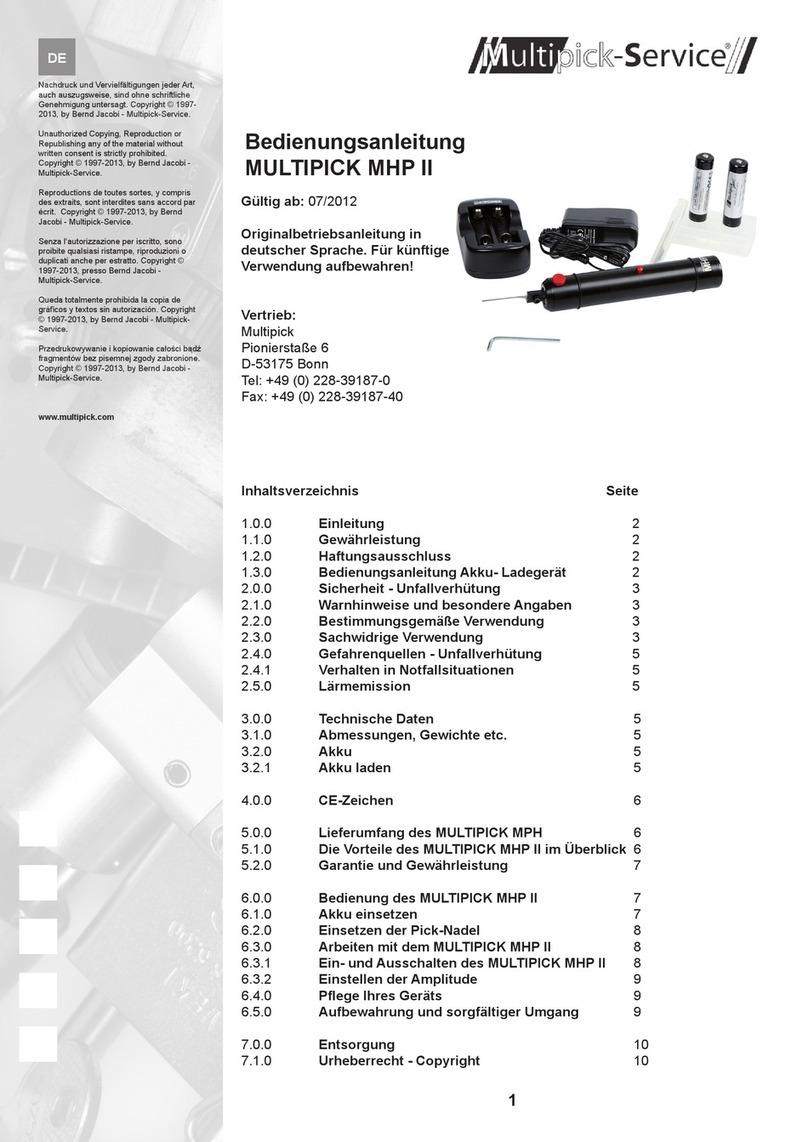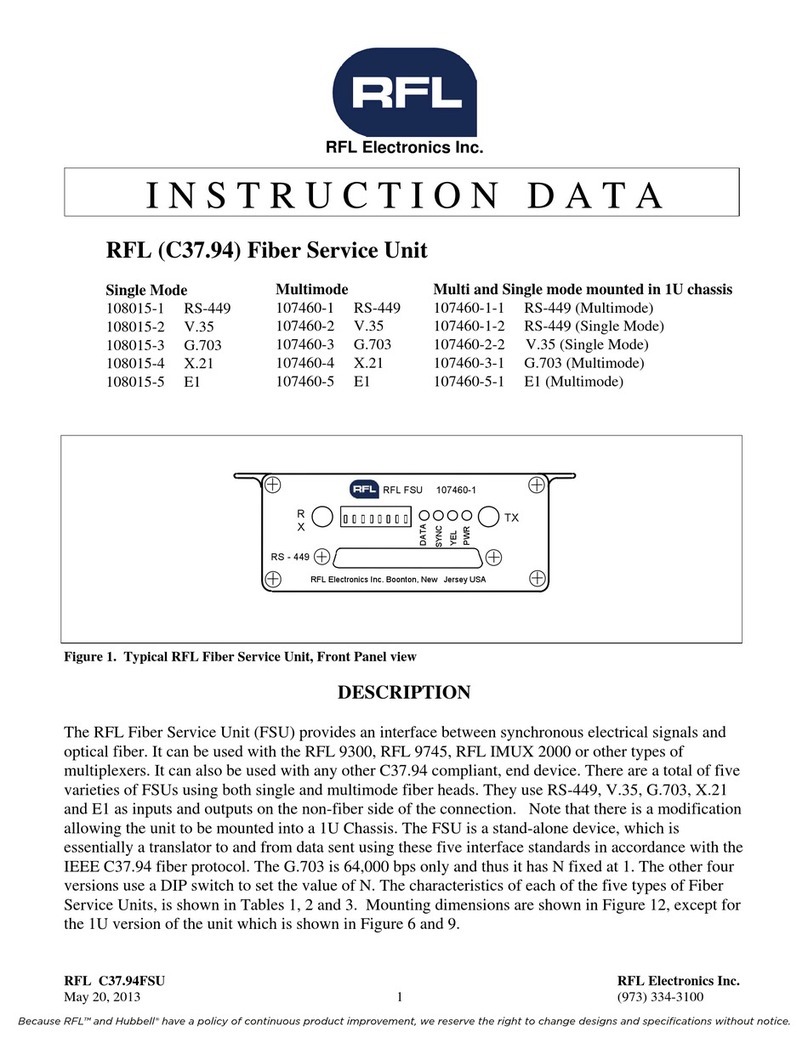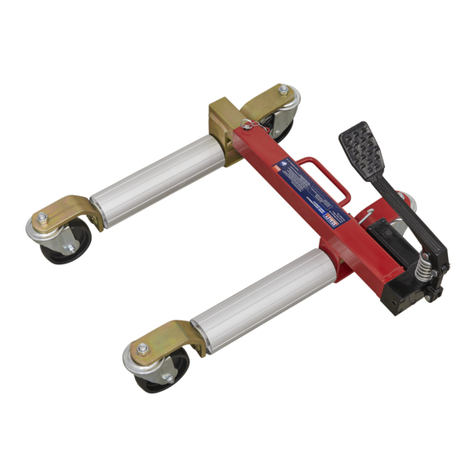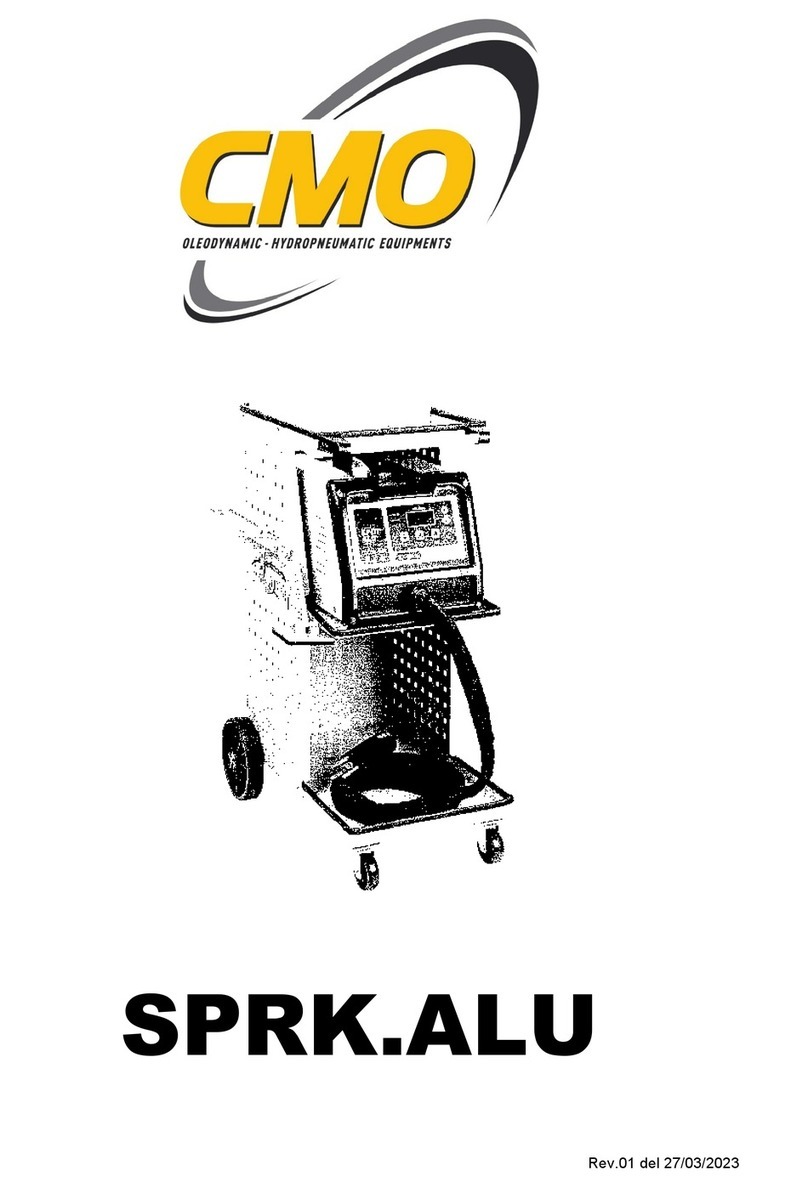
The definition of "operator" cannot be applied to minors or to people
with reduced physical, sensory or mental capabilities or without any
experience or knowledge required.
4.3 General Rules
The operator must carefully read and understand all the information and
instructions in the technical documents provided with the equipment.If the
operator cannot read this manual, it is responsibility of the owner of the equipment/
employer/person in charge of the safety to illustrate the contents of this document
and adequately train the operator in relation to the operating instructions and
safety measures for a proper use of the equipment.
•The operator must have basic knowledge of refrigeration, the refrigeration system,
refrigerants and the potential hazards that equipment under extreme pressure can cause.
•The operator who works on vehicles must have basic qualifications and knowledge of
mechanics, automotive engineering, vehicle repairing and of the potential dangers that may
arise during self-diagnosis operations.
•Theoperatormustbecompletelyclear-headedandsoberandnottakedrugsnordrinkalcohol
before or when using the equipment.
•The operator must follow all the instructions provided in the technical documents.
•TheoperatorisrequiredtowearappropriatePersonalProtectiveEquipment(PPE)atalltimes
when using the equipment.
•The operator must monitor the equipment during the operating phases wherever this is
possible in compliance with the safety measures indicated below.
•The operator must periodically check the electrical connections of the equipment, making
sure they are in good condition and immediately replacing any damaged cables.
•The operator must periodically check the parts that are subject to wear and replace them if
needed, using only original spare parts or spare parts approved by the manufacturer.
•The operator must stop using the equipment immediately should any failure occur, and
promptly contact the technical assistance.
•Contact your retailer for extraordinary maintenance operations.
•Do not remove or damage the labels/tags and the warnings on the equipment; do not in any
case make them illegible.
•Do not remove or tamper with any safety devices the equipment is provided with.
4.4 Safety Devices
The R3AC50 charging stations are equipped with the following safety devices:
•Safety pressure switch: it stops the compressor when the pressure reaches a cut-off level.
•Safety valve: it opens completely if the PS value is reached.
•Main switch: it allows cutting off the power from the mains in case of an emergency or to
carry out maintenance.
•Safety level switch: it stops the compressor when the refrigerant inside the tank reaches its
maximum level.
Tampering with the above mentioned safety devices of any kind is strictly forbidden.
8
